Recruiting talented students and staff can make a difference to laboratories’ research outputs, enhance the achievements of principal investigators (PIs) and research groups, and boost the reputations of their programmes and universities. But lockdowns and border closures triggered by the COVID-19 pandemic intensified global competition for talent as many researchers grappled with anxiety about big career moves, with some preferring to stay in their current roles.
Five researchers offer advice on how to recruit and retain talented students and colleagues, based on their own experiences of being hired, and of hiring colleagues to join their research groups.
MANU PLATT: Advocate for talent and attend recruitment socials
Biomedical engineer and professor at Georgia Institute of Technology and Emory University, Atlanta.
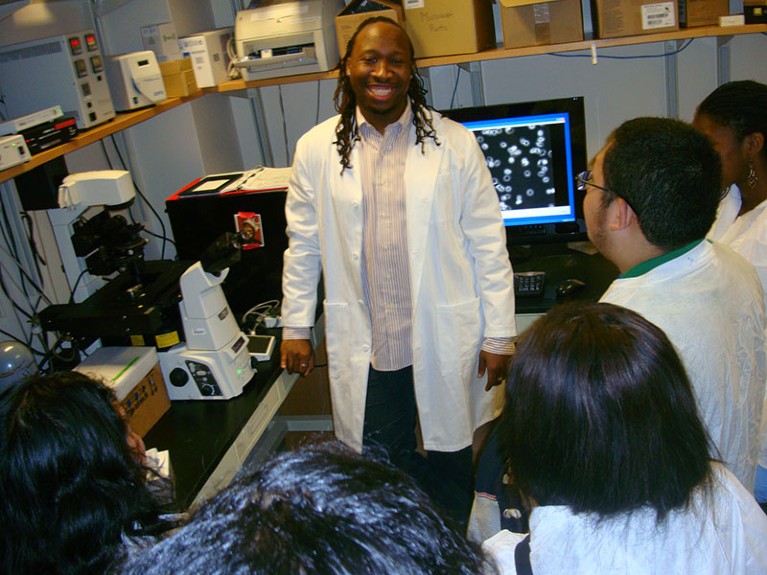
Manu Platt urges members of hiring panels to advocate for talented students in their labs.Credit: Courtesy of Manu Platt
I advise members of hiring panels to advocate for talented PhD students and postdocs in their programme and incentivize them to stay. This is especially true for researchers from under-represented communities because universities are now putting more emphasis on recruiting them.
I benefited from this approach in 2006, when I was encouraged to apply for faculty positions in my department after finishing my joint PhD programme at Georgia Institute of Technology and Emory University, both in Atlanta. Robert Nerem, a bioengineeer and my long-time mentor, had advocated for me behind the scenes. It made me feel valued and created a sense of loyalty. This motivated me to return to my old department, which I did after completing a two-year postdoctoral placement at Massachusetts Institute of Technology (MIT) in Cambridge.
I have a diverse lab and am proud of it. I’ve trained 12 PhD students — and among the 10 who have graduated so far, 4 are Black women, one is a Korean woman and one is a Filipino American man. Four women have also obtained tenure-track faculty positions. Of the 60 undergraduate researchers my lab has trained, at least 30 are from under-represented communities in science, technology, engineering and mathematics.
Nature Career Guide: Recruitment
I do not intentionally shape the composition of the lab, but my research focus and personality tend to attract people who care about diversity, equity and inclusion. My lab works on projects that tackle conditions including aggressive breast cancer in young women in Ethiopia and sickle-cell disease, which disproportionately affect resource-poor communities — and, in the latter case, minority ethnic groups. This attracts students who care about global health and equitable health access. I enjoy cultural diversity and organize lab socials for us to learn about one another’s culture.
It is particularly challenging for junior faculty members to recruit when there are ‘superstar PIs’ in the same department. They need to actively promote their research and brand to offer something special. A good lab website lets potential students know who you are and what you do. Our photo page on lab social activities includes our participation in a Sickle Cell Disease Foundation charity race to show the fun side of my group. For the People page, I ask all lab members to pick a theme song to help prospective students learn what our team members are like as people. Mine is Drake’s ‘Nice for What’ because the lyrics celebrate Black women and empowering oneself. It feeds my soul.
Faculty members who are recruiting should try to attend all of their department’s recruiting events, such as socials, poster sessions and campus-orientation sessions. This will get your name out there and give you an opportunity to interact with students and let them know you personally. For example, I met one of my first PhD students when she was doing summer research at MIT, and I became her postdoc mentor. The ability to build rapport and trust is key to recruiting talented people.
It can be hard to shortlist a handful of candidates from hundreds of applications. I find it helpful to attend ‘Meet the Faculty Candidate’ events, at which candidates present their research visions in posters and circulate one-page research statements and CVs. Members of recruitment committees can either do a targeted search for individuals in a particular field or ‘shop’ around the poster hall looking for people doing interesting research.
The pandemic might mean that such events go hybrid, with much-reduced in-person interaction. Candidates can still shine by producing short videos to introduce themselves and their research virtually, which can be helpful when it is time to shortlist applicants for interviews.
LARA URBAN: Be fair and consider using social media
Conservation genomics researcher and principal investigator at the Helmholtz Pioneer Campus and Helmholtz AI in Munich, Germany, and at the Technical University of Munich School of Life Sciences in Freising, Germany.
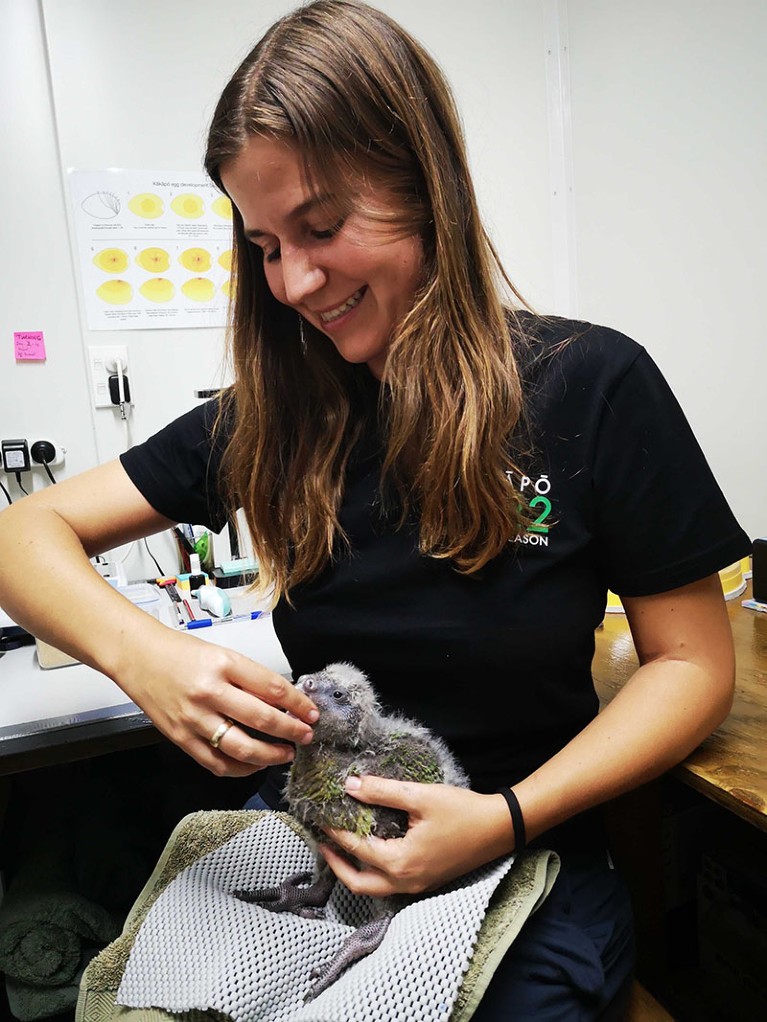
Lara Urban uses social media to share research openings, and avoids making job descriptions too specific.Credit: Lydia Uddstrom
I began my own research group at Helmholtz Munich, the German Research Center for Environmental Health, in June 2022. I’d been interviewed remotely from New Zealand, seven months earlier. The hiring process consisted of a presentation and interviews over the course a week.
Internal candidates also presented virtually, so the recruitment process felt fair to people like me who couldn’t travel. The 12 interviewers included a director of diversity, equity and inclusion to make sure that the process was fair to under-represented researchers. Three of the four candidates given offers were women.
The presentations were organized in the style of open seminars, and everyone was invited to attend. This allowed me to understand the future direction of the institute by seeing the research interests of the 11 shortlisted candidates, and to evaluate if I was a good fit for the institute, and whether I would be surrounded by colleagues with whom I could collaborate.
How we boosted the number of female faculty members at our institution
It is challenging for me to hire as a junior faculty member because I am not yet established. I understand why people prefer having a senior professor as their supervisor, because experienced supervisors have a stronger track record and a more extensive professional network than I do. But joining a young lab means that students and postdocs get to learn how to set up a lab from scratch.
I plan to involve my lab members in this process, and I feel that the experience will prove extremely valuable to them — even if they move to industry to lead a team. They also get to play a central part in creating the work culture they want in a young lab.
I have two strategies to ensure that I reach out to as many candidates as possible. First, keeping the job description broad, by listing a range of desirable rather than specific skills, allows me to shortlist and interview candidates who have the right motivation. Even if their interests do not exactly match mine, we can find overlaps and think of a project that both of us are excited about. So far, I have interviewed promising candidates and have accepted my first PhD student.
Second, I make use of social media, especially Twitter, to share research openings. Junior faculty members such as me are under pressure to publish. This can create perverse incentives for us to hire candidates from ‘advantageous nations’ (by this, I mean countries from which it’s easier to recruit; so, here in Germany, that means other European Union countries). Such candidates can get on board earlier because of their visa status and because their previous degrees are more likely to be recognized. It is important to give under-represented researchers the same chance. I find that advertising jobs using social media can help to address this issue a little. Twitter gets the message out instantly — and by reaching as many potential candidates as possible, and enabling information to flow faster, it can make up for time needed for procedures such as visa applications.
MENG HOW TAN: Embrace your situation and be quick to act
Associate professor of chemical and biomedical engineering at Nanyang Technological University, Singapore.
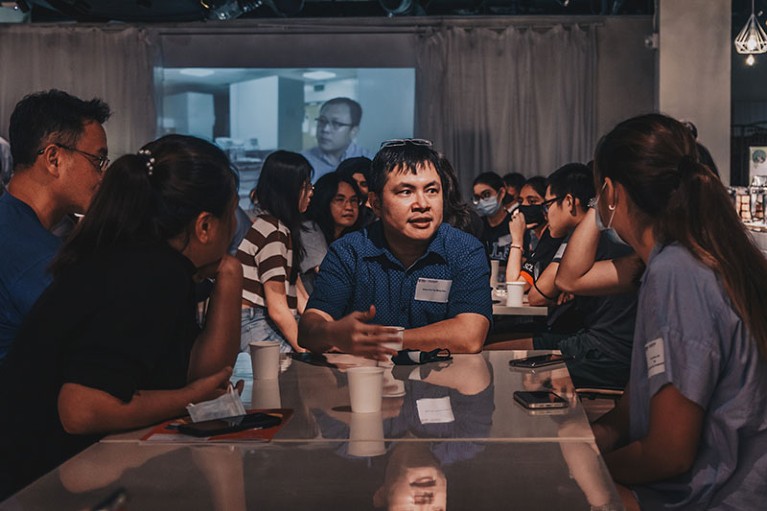
Meng How Tan keeps alumni updated on the progress of his department and encourages them to share their experiences.Credit: Nanyang Technological University, School of Chemistry, Chemical Engineering and Biotechnology
I advise hiring managers to act fast once they find a good candidate. After Singapore closed its border in 2020 because of the COVID-19 pandemic, professors here had to compete with one another for local candidates because foreign postdocs could not enter the country. I was too slow to act when a promising candidate emerged, and the person quickly found an alternative lab. I learnt my lesson and next time acted faster. When hiring, it is also crucial to work closely with colleagues in the human-resource team so that you know the legal requirements and what documents are needed to smooth the recruitment process.
As well as recruiting academic staff, I take care of non-academic affairs for undergraduate and graduate students in my department. This requires me to think of ways to attract the best students to our programmes and to engage students and alumni. I do this by organizing orientation and career talks involving alumni. I believe in keeping alumni updated on the progress of our department.
Competition to attract the best undergraduates is stiff in Singapore, where only the top 30% of the population, in academic terms, get to study at the island’s public universities. Before the pandemic, my department organized tea sessions with outstanding secondary-school students, their teachers and parents, to talk about our programmes and what undergraduates can expect to gain. We gave school talks and exhibited some of our research prototypes. In Asia, parents strongly influence what their children study. From my experience, parents are most concerned about career prospects, so we encourage alumni to share their experiences and to convince prospective students and their parents of the value of our degree programmes.
At the peak of the pandemic, my colleagues organized virtual lab tours on YouTube and reinvented our recruitment strategies. For instance, my university started featuring research related to the pandemic, including a project from my lab on COVID diagnosis. Over the past two years, we’ve seen an increase in the number of strong applicants wanting to read bioengineering.
STEPHANIE SEIDLITS: Think out of the box and provide regular updates
Associate professor of biomedical engineering at the University of Texas at Austin.
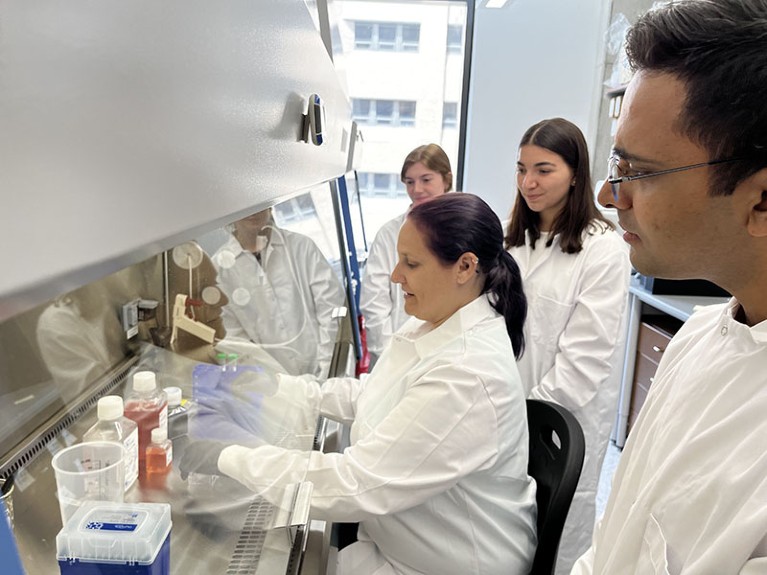
Stephanie Seidlitis motivates new lab members by giving them the chance to start their own projects and take on leadership roles.Credit: Alireza Sohrabi
When I moved to the University of Texas at Austin in January 2022, I faced the possibility of delays in getting new lab supplies because of the pandemic. Thankfully, the university had hired me in 2021 through an adjunct appointment so that I could activate my start-up funds and begin making purchases. I felt that this was a sincere gesture, which affirmed the institution’s commitment to my recruitment and was especially important during an uncertain time such as the pandemic.
Two postdocs and one senior graduate student relocated with me from the University of California, Los Angeles. I really appreciate their support. It is incredibly valuable to have their expertise and not have to build the lab all over again by myself. It is important to recruit and retain talented lab members and to nurture them — by showing them that we’ll provide opportunities for success and exploration, for example — so that we can all benefit from working together. When lab members have moved here from another city, I motivate them by giving them the chance to start new projects, expand their professional networks (I connect them with colleagues here and in Los Angeles) and become leaders in my new lab.
It is crucial to be creative to attract talent to your lab. I could have said no to PhD students looking for a lab rotation, because my lab space was not ready when I started here, but instead I initiated a virtual rotation for several first-year PhD students. We’d already had some experience with virtual research from the start of the pandemic, so we had some idea of how to interact effectively. During virtual rotations, students were invited to lab meetings with a more senior lab member as their mentor, who involved them in analysing data for our projects and future publications. I ended up accepting two PhD students on rotation into my lab and I intend to include them as authors in future manuscripts.
XUN-LI WANG: Be focused and encourage team effort in recruiting
Professor of physics at the City University of Hong Kong.
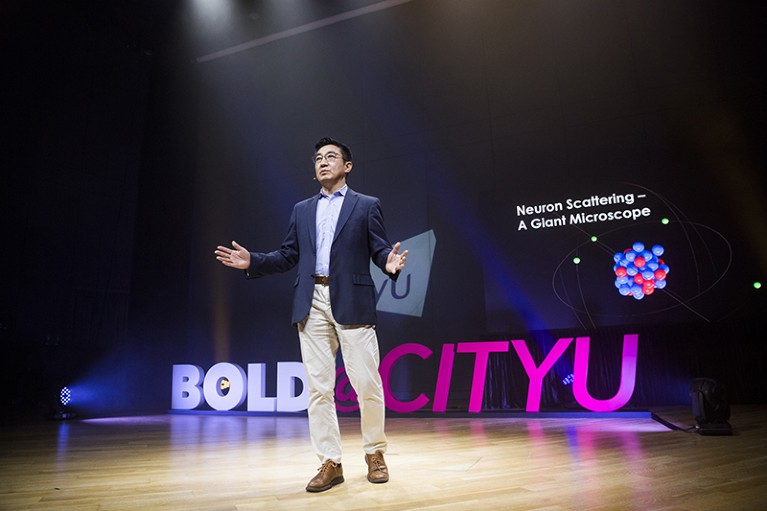
Xun-Li Wang emphasizes the importance of referrals, and encourages colleagues to help with recruitment by using their personal contacts.Credit: City University of Hong Kong
I promote my university and department during conference talks and seminars at universities where I know there might be people interested in joining my team. When doing presentations and poster sessions, I stress to potential faculty candidates the resources that we offer, such as access to cutting-edge equipment, and the leadership opportunities available in our young and dynamic department. Our old department was split in two in 2017, and most of the faculty members went to the newly created Department of Materials Science and Engineering, leaving only 12 of us in the Department of Physics. We focused our recruitment effort on five research themes, including quantum physics and soft matter. We have now grown to 26 faculty members, including 11 who were hired during the COVID-19 pandemic.
I believe in team effort, and encourage my colleagues to help with recruitment through their personal contacts. Six recent faculty appointments came through referrals. I am also seeing more and more of my colleagues’ collaborators applying to our department, which is a good indication that our reputation is becoming stronger.
I suggest making use of both conventional and emerging advertising platforms to maximize the outcome of recruitment efforts. My department advertises faculty openings in the careers sections of Nature and Science, to reach out to a wide audience, as well as in field-specific magazines such as Physics Today and Physics World. We have also recently started using Facebook and Twitter to promote our department’s achievements and job openings on social media.

 How we boosted the number of female faculty members at our institution
How we boosted the number of female faculty members at our institution
 A lab leader’s guide to hiring a postdoc
A lab leader’s guide to hiring a postdoc
 A postdoc’s guide to choosing the right lab
A postdoc’s guide to choosing the right lab






